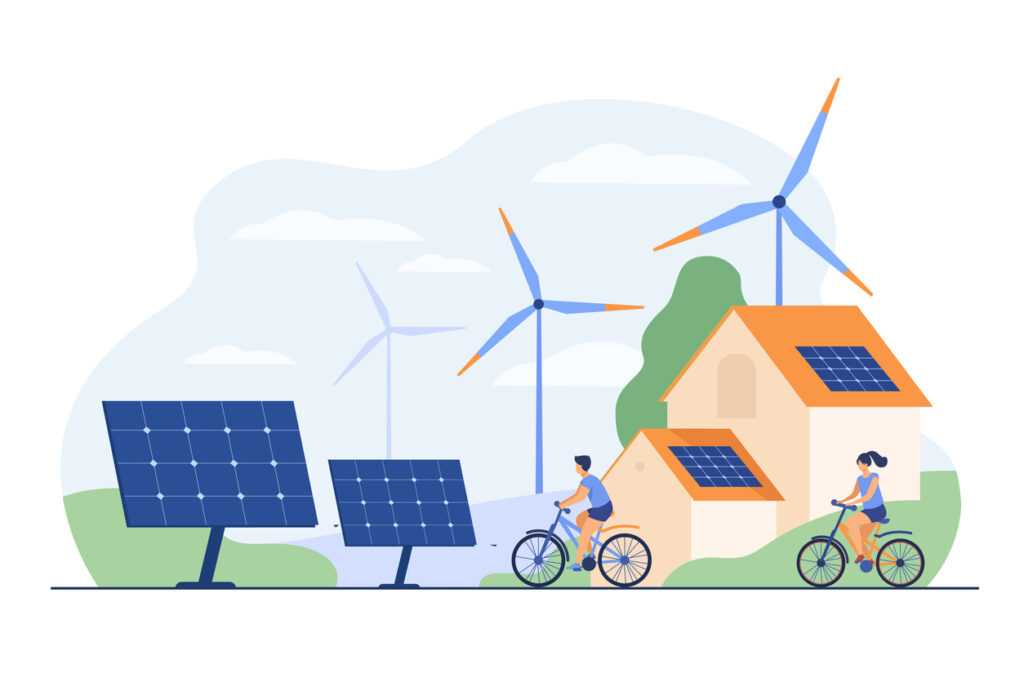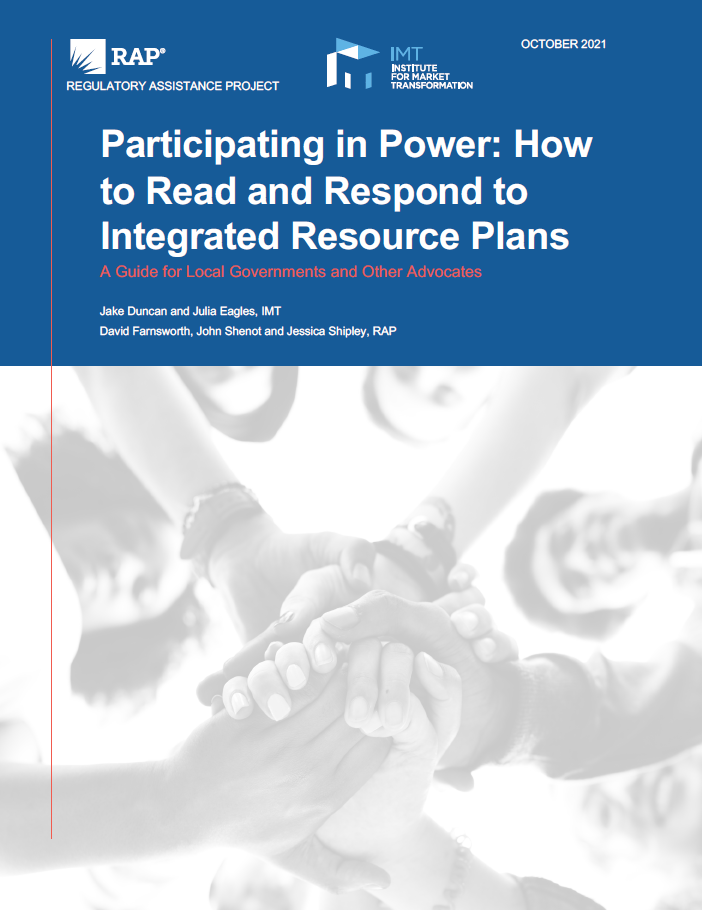Watch the webinar recording.

To meet 21st-century decarbonization and social equity priorities, utilities need to transform the way they plan power sector investments. One of the most important opportunities to encourage these changes is to become an effective participant in the development of a utility integrated resource plan (IRP). An IRP shapes the thinking of utility executives, regulators, and intervening parties about the future of the utility, the reliability of the grid, and the costs and other effects that will be borne by customers and the environment.
Stakeholder participation is crucially important in the development of an IRP, but the expertise and level of effort required often bars the public, including local governments, from fully engaging. To address this challenge, IMT and the Regulatory Assistance Project teamed up to develop Participating in Power: How to Read and Respond to Integrated Resource Plans.
Participating in Power is designed to help local governments and their constituents be more effective in their participation in utility power planning processes before regulatory agencies. It should also help regulators understand the challenges that these stakeholders face in representing their interests.
The guide is built on the following assumptions:
- In order to meet 21st century decarbonization and other social imperatives, utilities will have to transform the way they plan power sector investments.
- Making decisions in “the public interest” is possible where regulators endeavor to accommodate wide swaths of the public represented by local governments and the communities of which they’re comprised.
- And one of the most important opportunities to advocate for change in the power sector is through engagement in utility integrated resource plans – even if significant barriers exist to participating – and understanding how to engage in an IRP process.
Broad stakeholder participation will lead to greater scrutiny of utility proposals and, ultimately, more responsive IRPs. The larger the number of perspectives also provides regulators with a more complete view of “the public interest,” which helps them understand accommodate the desires of utility customers. A recent publication from the American Cities Climate Challenge Renewable Accelerator goes into great detail on how to participate in the IRP stakeholder process, as described in the image below. Participating in Power complements this resource by providing specific guidance on how to respond to the IRP document itself.
Elements of an IRP development process

In order to help local governments and other advocates digest an IRP, which can range from 100 to 1,000 pages, and effectively participate in the planning process, the Participating in Power guide contains four main sections, described below.
1. Common Elements of IRPs
This section describes how IRPs are structured, and what types of information can be found in which section of the IRP. This is important because, as the reader homes in on a specific theme important to them, it helps them understand where to look for information regarding assumptions, data, and methods used by the utility on that topic.
2. How to Read and Analyze an IRP
IRPs are a product of years of work, various models and assumptions, and input from numerous stakeholders. No one individual produces an IRP and not surprisingly, no individual has the capacity to effectively understand and critique every aspect of an IRP. Given this challenge of scale, this section discusses some strategies for effectively analyzing an IRP and also for layering equity and clean energy priorities into that analysis.
First, the guide offers tips on how to read through an IRP with one’s goals in mind. For example, looks at the company’s previous IRP and see how their plan and language around a specific area of interest has changed over time.
Next, the guide takes a deep dive into strategies to advance equity and climate priorities, informed by interviews with several local governments and examples drawn from comments they have submitted in their respective IRP processes. The paper explains the rationale for supporting each priority, its relevance to the utility regulatory process, and where to look for supporting data. Participating in Power also suggests questions for the advocate to raise with the regulator commission, and shares short case studies from submitted comments.
Specific social justice topics covered include: highlighting local effects of power plant pollution; making the case for integrating equity into the IRP; adopting a just transition framework; addressing community priorities and energy burden; and advocating for the inclusion of underrepresented communities in the utility’s workforce. Clean energy topics include assessing the cost-effectiveness of demand-side resources, promoting clean energy generation and beneficial electrification, and including demand flexibility in strategic planning.
3. How to Develop Comments
For advocate positions to be officially considered by the utility regulators, stakeholders have to submit either public or formal comments to the procedural record. This ensures that the perspectives and evidence shared make it into the body of evidence on which the regulators base their decisions. This section of Participating in Power provides tips and strategies to design effective written comments.
4. Key Considerations for Success
This section acknowledges that much more goes into IRP engagement than the official stakeholder process led by regulators. We offer a high-level overview of several important, complementary factors to consider, including intervenor or stakeholder compensation, coalition building, and joint response tactics, creating a more inclusive stakeholder process, and assessing a utility commission’s authority.
The guidance, tactics, and illustrative examples provided in Participating in Power are intended to help local governments and other advocates to effectively read and respond to utility IRPs, so they more accurately reflect community climate and equity priorities. A more transparent and accessible IRP process can increase participation for local governments and community representatives. It can also provide public utility commissions with a more complete sense of the needs of utility customers, and improve their ability to make determinations in “the public interest.”



